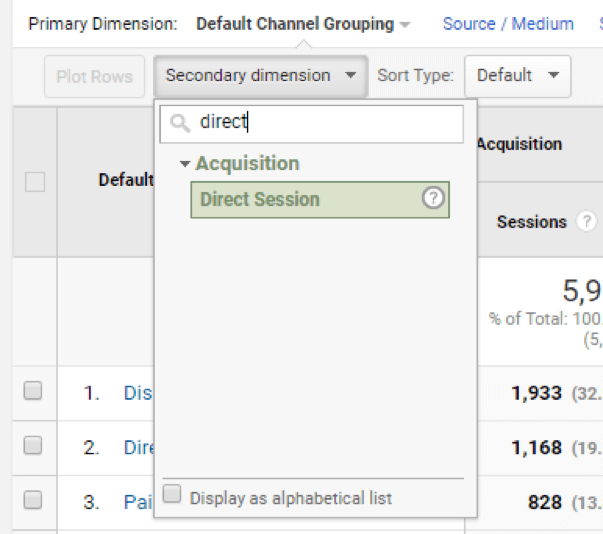Maximize Your Coverage with Secondary Dimension in Google Analytics
Maximize Your Coverage with Secondary Dimension in Google Analytics
Blog Article
Enhance Your Data Analysis Using Secondary Measurement in Google Analytics
Discovering the capabilities of secondary measurements in Google Analytics opens a world of possibilities for refining information analysis. By layering added measurements onto primary data sets, a more detailed story arises, dropping light on user interactions and performance signs.
Recognizing Second Measurements
In the realm of information evaluation, a critical element to grasp is the principle of additional measurements and their significance in extracting much deeper understandings from Google Analytics records. Additional dimensions in Google Analytics refer to added parameters that can be contributed to the primary dimension, permitting an extra comprehensive evaluation of data. By integrating additional dimensions, analysts can sector and filter information to uncover patterns, fads, and correlations that might not be evident when looking at the data as a whole. These additional measurements can provide context and an extra extensive understanding of individual actions, website traffic sources, and other vital metrics tracked by Google Analytics.

Benefits of Utilizing Secondary Measurements
When evaluating information in Google Analytics, the utilization of second measurements provides invaluable insights into user habits and efficiency metrics. By including a secondary dimension to your key information, you can dig deeper into the features of your site visitors and their interactions. Among the key advantages of making use of second dimensions is the capability to section and compare information a lot more efficiently. This division enables you to understand how different variables, such as demographics or web traffic sources, effect customer actions and conversions (Secondary Dimension in Google Analytics).
In addition, additional dimensions help in identifying patterns and connections that might not be promptly evident when taking a look at the data in isolation. This deeper degree of evaluation can uncover beneficial info that can assist advertising methods, site optimization, and general organization choices. Furthermore, secondary measurements boost the context of your primary data, supplying a more detailed view of customer engagement and performance metrics. In general, the usage of secondary dimensions in Google Analytics can substantially enhance the deepness and top quality of your data analysis, resulting in even more educated decision-making and boosted results.
Just How to Include Additional Dimensions
By incorporating secondary measurements in Google Analytics, individuals can obtain much deeper understandings into their data analysis procedure, permitting for more comprehensive assessment of individual habits and efficiency metrics. Including over at this website secondary dimensions is a simple process that can significantly improve the deepness of evaluation. When in the record, situate the "Secondary dimension" tab over the data table.
Studying Information With Secondary Measurements
Using secondary dimensions in data analysis offers a much more detailed understanding of individual habits and performance metrics. By adding an additional dimension to your key information established in Google Analytics, you can dig deeper right into the characteristics of your site visitors and their interactions. Combining the primary dimension of 'source/medium' with the secondary dimension of 'landing web page' can disclose which specific pages are drawing in website traffic from different sources, helping you optimize these pages for much better engagement.

In significance, assessing data with secondary measurements equips you to acquire valuable understandings into individual actions, identify trends, and make educated decisions to boost the efficiency of your electronic buildings.
Ideal Practices for Second Measurements
In information analysis, incorporating second measurements successfully can considerably enhance the deepness of understandings stemmed from metrics and customer habits patterns. When making use of additional measurements in Google Analytics or any various other analytical device, it is vital to adhere to finest practices to have a peek at these guys make certain the accuracy and relevance of the information analysis.
One trick finest method is to meticulously select secondary dimensions that enhance the primary dimension being examined. Picking secondary dimensions that give extra context or additional division can provide an extra comprehensive understanding of the data. It is likewise vital to prevent overcomplicating the evaluation by consisting of a lot of second measurements, which might lead to confusion or dilution of understandings.
In addition, it is recommended to explore different combinations of primary and second measurements to reveal brand-new correlations and fads. Routinely improving the choice and reviewing of additional dimensions based on the particular goals of the evaluation can bring about even more actionable insights. By following these finest practices, information analysts can take advantage of secondary dimensions effectively to boost the general information analysis procedure and decision-making capacities.

Final Thought
Finally, incorporating secondary dimensions in Google Analytics is vital for a detailed information evaluation strategy. By leveraging second dimensions alongside primary ones, experts and marketing professionals can reveal useful insights and correlations that can inform decision-making and maximize electronic advertising techniques. Understanding how to efficiently utilize browse around this web-site secondary measurements and adhering to ideal practices will permit professionals to extract purposeful information and enhance their general efficiency metrics.
Additional dimensions in Google Analytics refer to added specifications that can be added to the key measurement, allowing for an extra thorough evaluation of data. By incorporating second dimensions, experts can section and filter data to uncover patterns, fads, and connections that might not be apparent when looking at the information as a whole. Combining the main measurement of 'source/medium' with the additional measurement of 'touchdown page' can expose which certain web pages are attracting traffic from different sources, assisting you enhance these web pages for much better interaction.
One secret best practice is to thoroughly choose additional measurements that complement the main measurement being examined. By adhering to these best methods, information analysts can take advantage of second dimensions properly to improve the general data evaluation procedure and decision-making capabilities.
Report this page